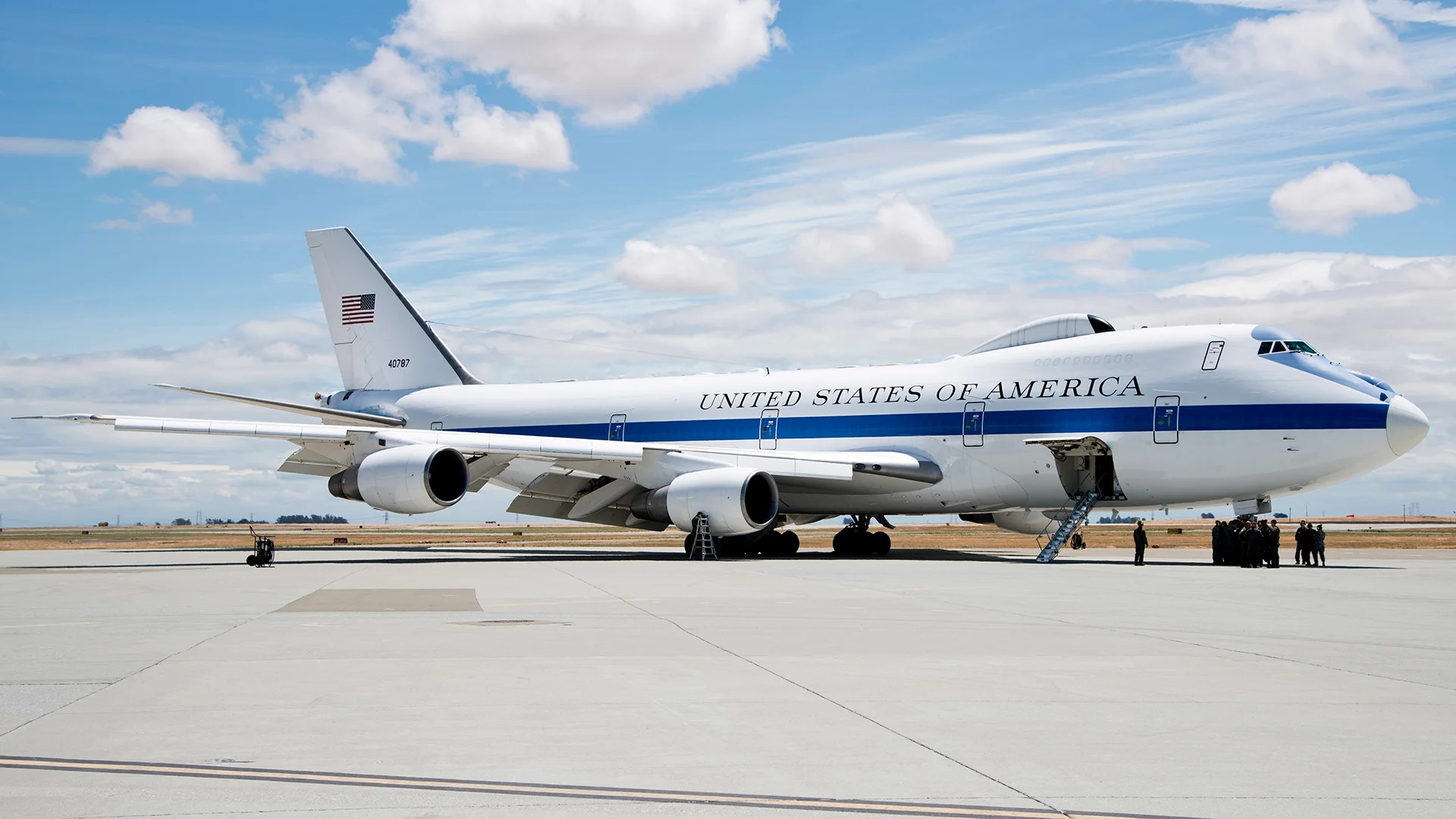In a surprising development in the program, Boeing has reportedly been dropped from the competition to build a successor to the U.S. Air Force’s E-4B Nightwatch ‘Doomsday Plane.’ If true, the latest move would appear to leave the door wide open for Sierra Nevada Corporation (SNC) to provide the Survivable Airborne Operations Center (SAOC) that will supersede the E-4B, which is based on a Boeing 747-200 airframe. However, the new aircraft platform will almost certainly still be a Boeing product.
According to a recent report from Reuters, Boeing told the news agency that the Air Force has “eliminated” it from the SAOC competition. Valued at over $8 billion over the next five years, a contract award for SAOC is expected in early 2024.
Editor’s note: Boeing has confirmed they are no longer competing for the contract. See the update at the bottom of the post.
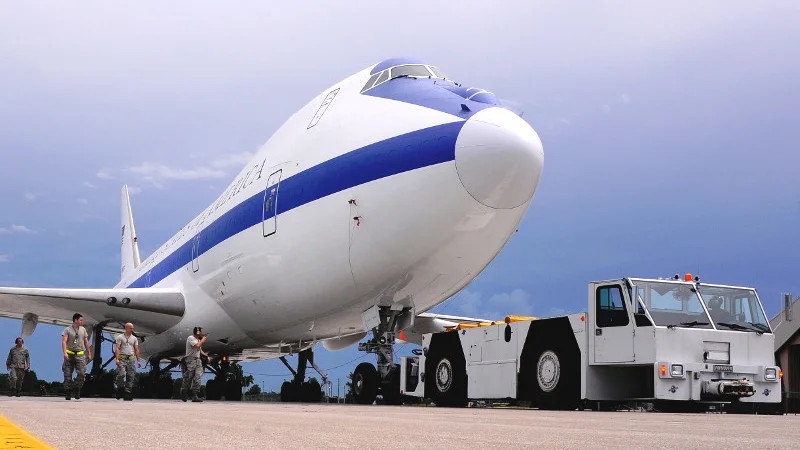
This would appear to leave the privately owned SNC as the only company still in contention for SAOC. The Air Force would not confirm or deny to Reuters whether or not any other firms were now involved.
“We cannot discuss an active source selection and detailed program information is classified,” an Air Force spokesperson told the news agency.
Two unnamed sources meanwhile confirmed to Reuters the apparent reason why Boeing — the original manufacturer of the E-4B, and the 747 airliner on which it’s based — was out of the running. Namely, Boeing and the Air Force “were unable to come to an agreement on data rights and contract terms, with the U.S. plane-maker refusing to sign onto any fixed-price agreement that locks it into paying costs above an agreed limit.”
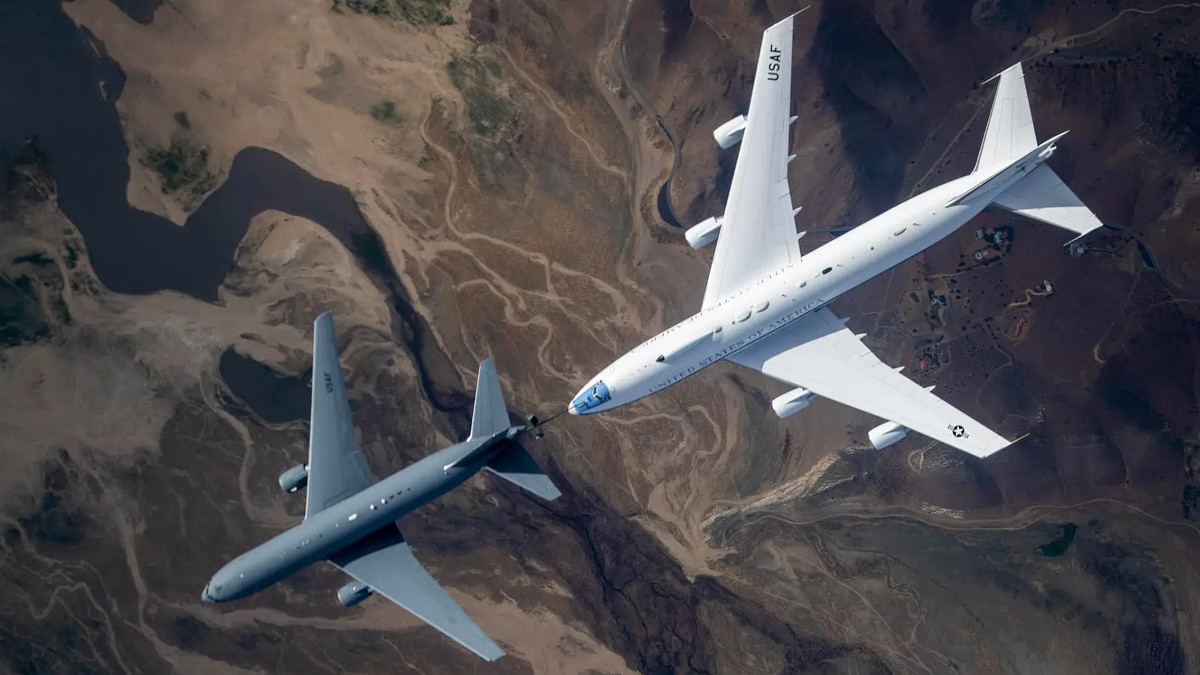
In a statement provided to the news agency, Boeing said: “We are approaching all new contract opportunities with added discipline to ensure we can meet our commitments and support the long-term health of our business.”
In a comment seemingly at odds with it being “eliminated” from the SAOC competition, the company added: “We remain confident our SAOC approach is the most comprehensive, technically mature, and lowest-risk solution for the customer and Boeing.”
If Boeing is really out of the competition, it seems likely that the company’s relatively terrible experience with previous fixed-price agreements was a critical factor in the decision.
This year alone, Boeing’s defense unit has reportedly lost $1.3 billion on fixed-price development efforts, including the high-profile VC-25B Presidential Airlift Replacement program, which you can read more about here. Other programs include the T-7 trainer, KC-46 tanker, MQ-25 carrier-based tanker drone, and MH-139 support helicopter, all of which have cratered profitability. Stretching back to 2014, the company has lost $16.3 billion on fixed-price programs.
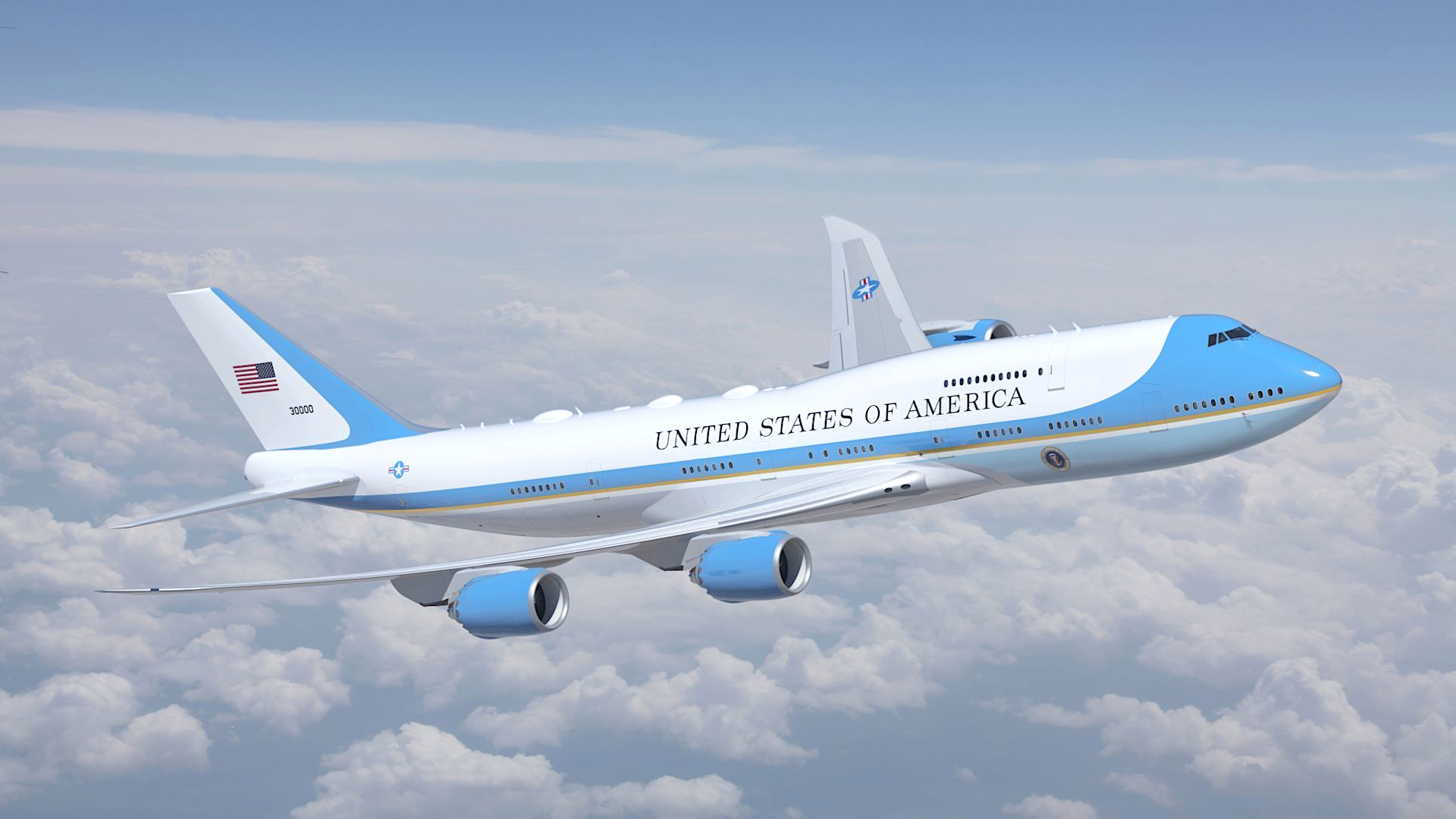
In October this year, in an apparent effort to reassure its investors, Boeing’s chief financial officer, Brian West, confirmed that the company had not signed any more fixed-price development contracts, nor would it in the future.
Expected to reach the end of its service life in the early 2030s, the four E-4Bs, also known as National Airborne Operations Centers, or NAOCs, primarily serve as a robust and survivable airborne command post from which the President of the United States can launch a nuclear strike, via a mechanism known as the National Command Authority (NCA).
As well as forming an essential part of the continuity of government plans that ensure national-level authorities can still function in even the most serious crises, the E-4Bs can be used to direct other major military operations or the response to other significant contingencies, including large-scale natural disasters if required.
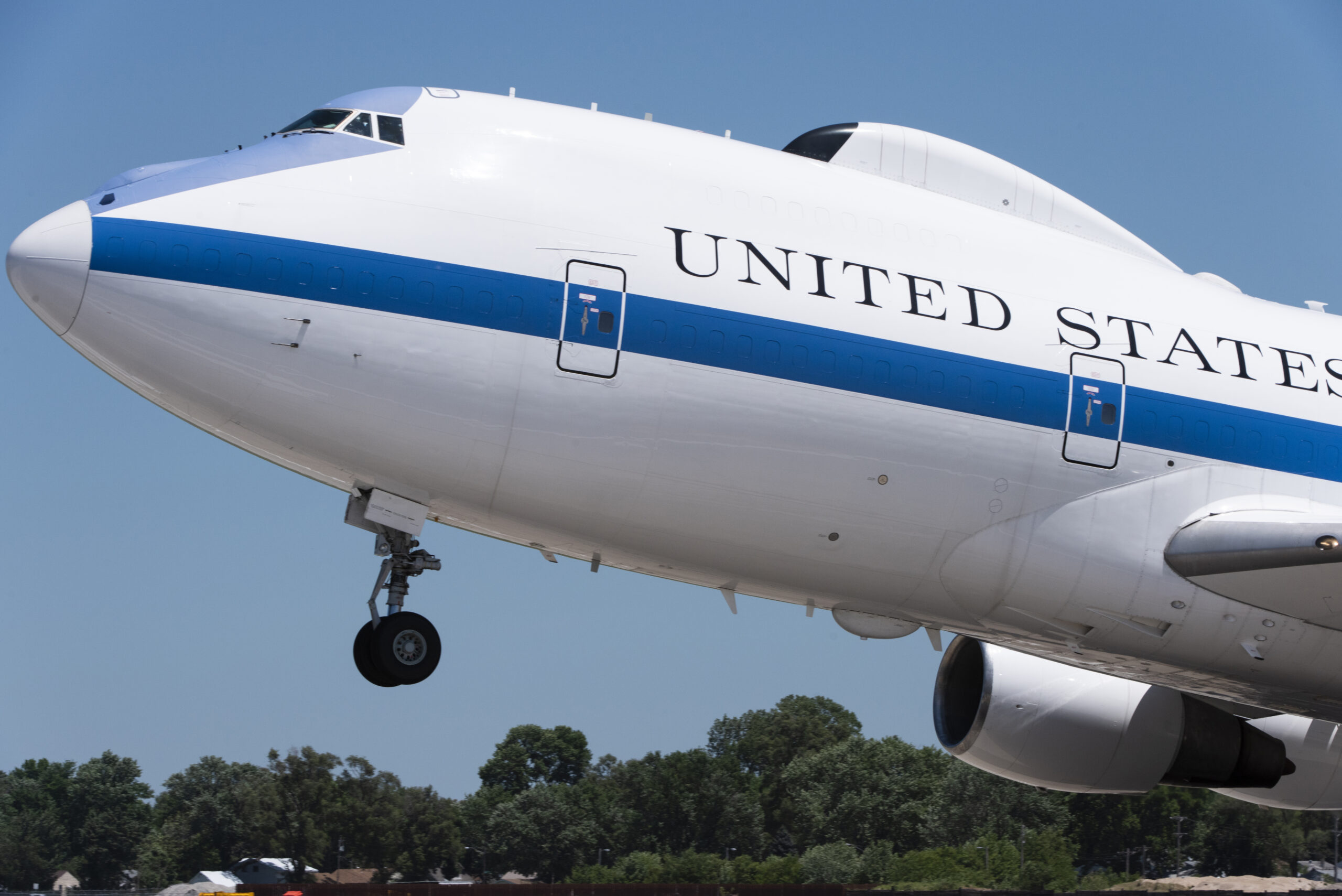
Normally, a single E-4B will shadow the President when they fly on one of the VC-25A Air Force One aircraft overseas. They are also used for transporting the Secretary of Defense on foreign trips.
For a full account of the E-4B and its missions, take a look at this past War Zone article.
Even though Boeing is now supposedly out of the picture for the SAOC program, all signs point to the fact that the E-4B’s successor will also be based on a 747 airframe, with multiple reports that a four-engine type is favored. The only other realistic four-engine option would be an Airbus design, but a used A380 platform seems very unlikely to gain support, not least in terms of security and political considerations. Major operational and airfield access issues would also be an issue with that type.

As long ago as 2017, there were signs that the Air Force was interested in another 747-based platform for the SAOC. At that point, it emerged that the service, together with the U.S. Navy, was exploring a possible common replacement aircraft for the E-4B, as well as the E-6B Mercury and C-32A types.
Then, in 2021, the Air Force Life Cycle Management Center’s (AFLCMC) Presidential Airlift Directorate, which is overseeing the SAOC effort, issued a contracting notice that specified: “The Government intends to continue to pursue a full and open acquisition strategy for the entire weapon system using a very large platform.” As we discussed at the time, that would appear to rule out all but a 747 airframe.
Tellingly, SNC’s new maintenance, repair, and overhaul hangar inaugurated in Dayton, Ohio, in August this year is sized to accommodate a 747-8. It covers an area of around 90,000 square feet.
The more modern 747-8 would be the very likely candidate for SAOC, with this same type already having been chosen by Boeing for its VC-25B Presidential Airlift Replacement program.
In August this year, Aviation Week reported that SNC had already selected the airframes that it would convert under the SAOC program. Although no more details were forthcoming, suitable 747 airframes would have to be second-hand, with the production line having shut down late last year.
Securing the SAOC contract would be an enormous coup for SNC, but the company is increasingly making efforts to move in on the kinds of programs that were once the preserve of the ‘prime’ contractors like Boeing.
SNC has also teamed up with Collins Aerospace to compete as a subcontractor for the U.S. Navy’s future E-XX aircraft, which will provide airborne strategic command and control support for America’s ballistic missile submarines — a mission also known as the TACAMO or Take Charge And Move Out.
It also appears certain that SAOC will provide a fleet bigger than the current four E-4Bs, with eight to 10 aircraft having been mentioned in the past and the possibility for even more beyond that. A larger fleet could become especially important if, as some have argued, the SAOC fleet also takes on the Looking Glass mission. This involves maintaining communications with the Air Force’s intercontinental ballistic missile (ICBM) and bomber units. While currently performed by the Navy’s E-6B Mercury fleet, the requirement has apparently been dropped from its successor, the E-XX.
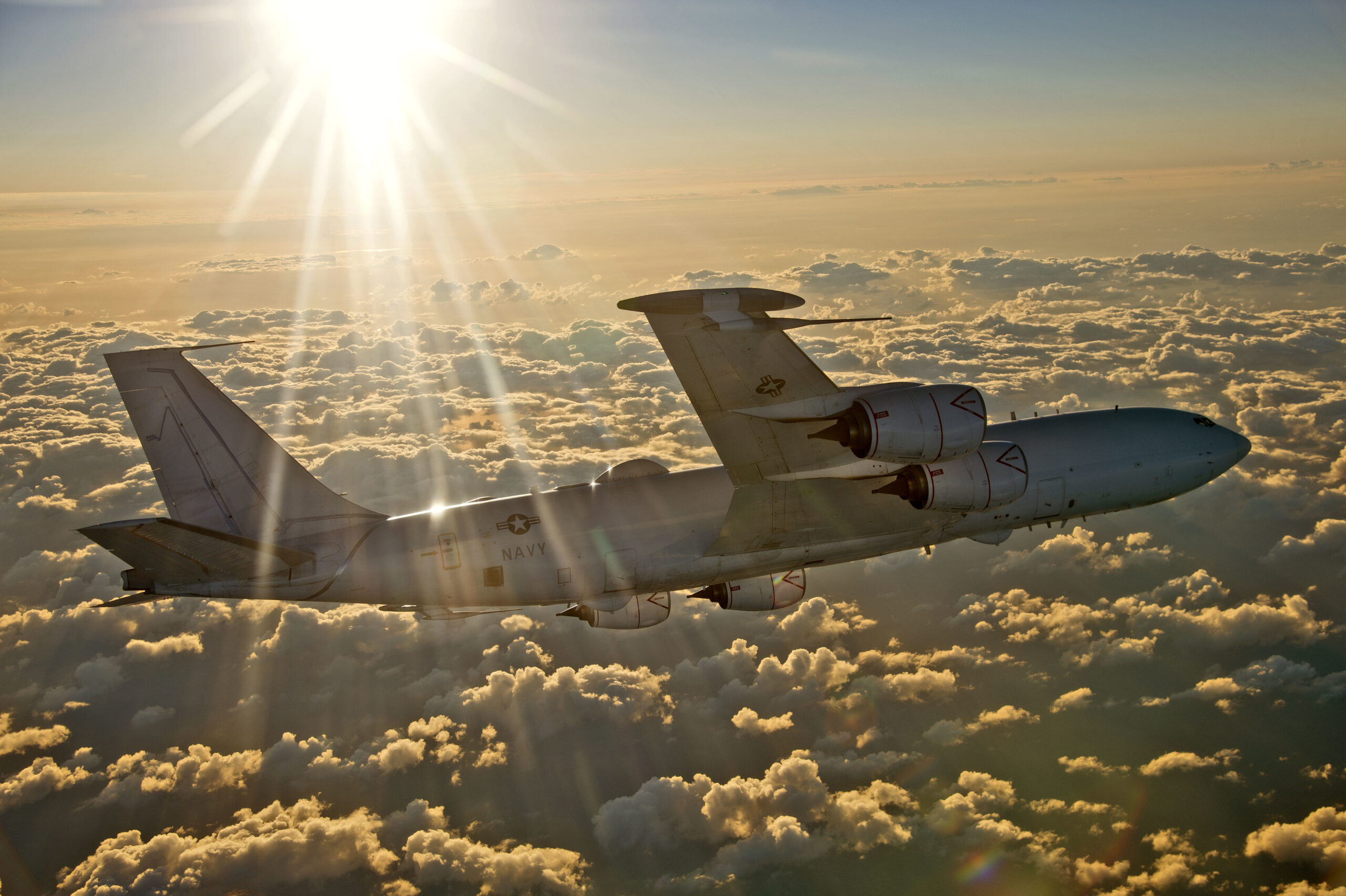
Configuring 747s for SAOC is also a logical continuation of the kind of work SNC has undertaken in the past, including on behalf of the Air Force’s Big Safari office at Wright-Patterson Air Force Base, Ohio, which manages various special mission aircraft programs. In particular, SNC has gained expertise in data and communication modifications, which will be at the heart of SAOC requirements. Indeed, SNC has become a big name in special mission aircraft integration, though SAOC would still be a larger project for the firm.
At this stage, details around the SAOC program, including source selection remain classified. But the signs are that Boeing is now out of the competition, potentially leaving the path clear for Sierra Nevada Corporation to emerge victorious. With a decision due early next year, we likely won’t have to wait that long to see if that’s the case.
UPDATE:
From a Boeing spokesperson to The War Zone confirming the company is no longer competing for the SAOC contract:
“We are approaching all new contract opportunities with added discipline to ensure we can meet our commitments and support the long-term health of our business. We remain confident our SAOC approach is the most comprehensive, technically mature and lowest-risk solution for the customer and Boeing. Our proposal is based on 60 years of military commercial derivative aircraft knowledge and experience including the design, development, and sustainment of the E-4B Nightwatch, which currently serves the national security command and control mission.”
Contact: thomas@thedrive.com
